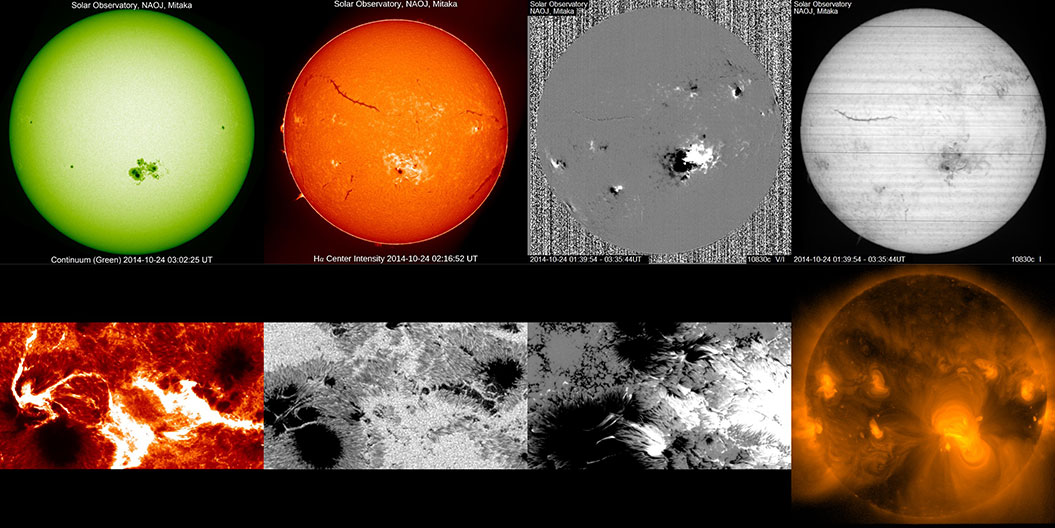About Solar Science Observatory
The Sun is just one of the many stars in the Universe. But it is the closest star to us and influences all of human activity as the dominant object in the Solar System. The magnetic activity in the Sun is representative of phenomena ubiquitous throughout the Universe. One of our major goals is to understand the solar magnetic field and magnetic activity through various scientific observations and analyses.
In the Solar Science Observatory, we push forward the leading edge of solar physics, by making maximum use of artificial satellites and large ground-based facilities, as well as developing observational equipment for use on sounding rocket and balloon flight experiments.
We also promote the scientific operation of the Hinode satellite in cooperation with the Institute of Space and Astronautical Science (ISAS) of the Japan Aerospace Exploration Agency (JAXA) as well as overseas institutes, and support studies using the data obtained by Hinode. We carry out long-term continuous observation via our solar observation facilities, and provide data for joint studies. Theoretical considerations and computer simulations are necessary tools for the analyses of these data, and we are helping to develop these important research methods as well.
Sunspots

Giant sunspot photographed on October 24, 2014.
(Top row: from left - white light, Hα line, He I 10830 Å, circular polarization. Taken with the Solar Flare Telescope.)
(Bottom row: from left to right - Ca II H line, white light, circularly polarized light image, and full disk X-rays. Taken with the Hinode satellite.)
Telescopes

Solar Flare Telescope
The Solar Flare Telescope is the primary ground-based instrument for solar observation located in the western part of Mitaka Campus.

Solar Observing Satellite “Hinode”
Since its launch in September 2006, the Solar Observing Satellite Hinode has observed the Sun in three different wavelength ranges: visible light, extreme-ultraviolet, and soft X-rays.